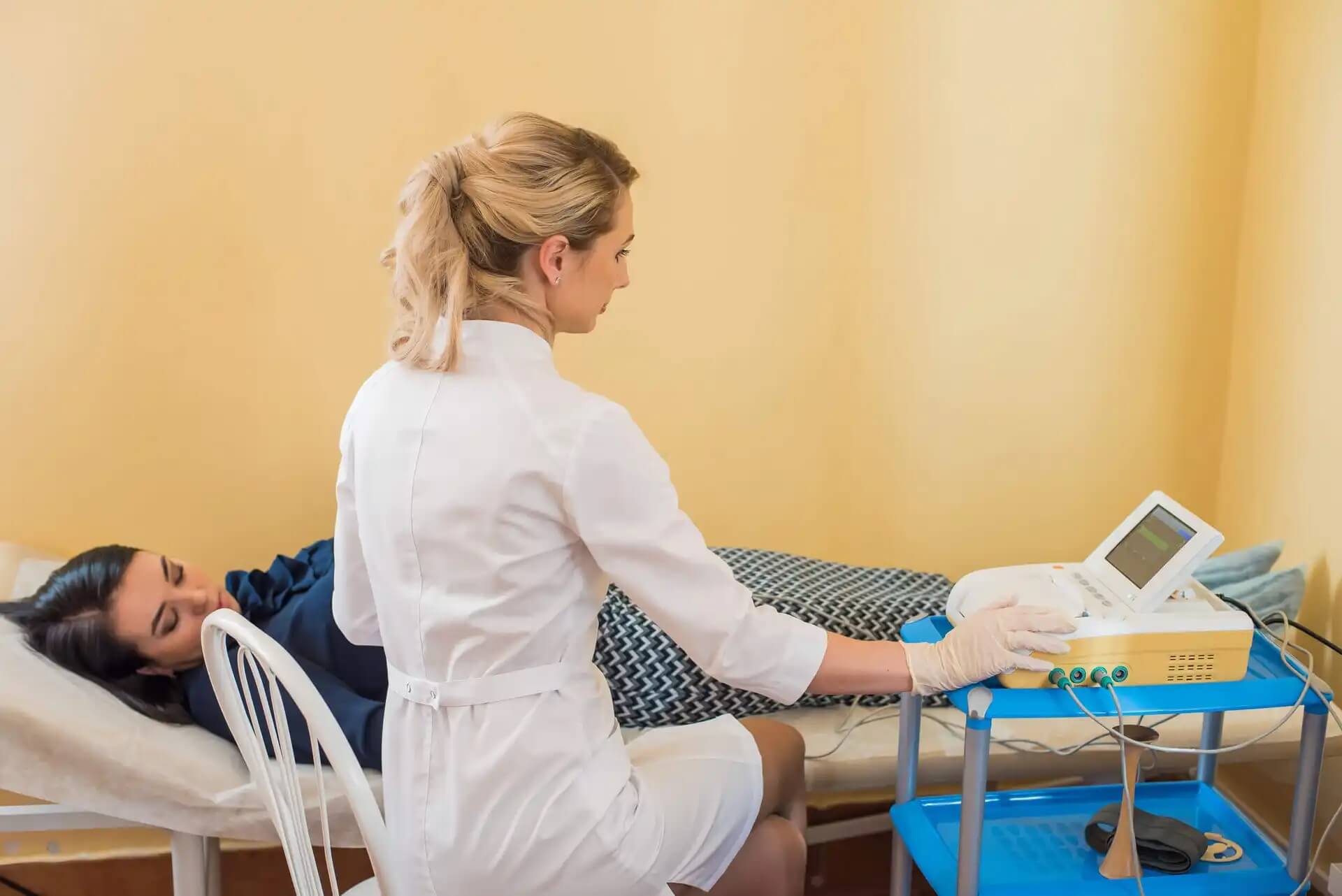Week 35 of Pregnancy: What to Expect

Week 35 of pregnancy is characterized by accelerated growth in both the baby’s weight and size. This is due, in part, to the increase in fat under their skin, which will help regulate your baby’s temperature.
During this time you should be more attentive to your medical check-ups and make sure you’re prepared, in case you give birth earlier than expected. In these cases, there’s important information surrounding premature birth that’s useful to know.
My baby: week 35 of pregnancy

At this stage, the baby enters a process of rapid growth in terms of weight and length. The baby is likely to measure about 35 centimeters (14 inches) and weigh about 2.4 kg (5.3 lb). If you maintain a healthy lifestyle, the chances are high that, he or she, will continue to steadily grow.
Do you know what subcutaneous fat is? All humans need a well-regulated body temperature, and this is very important when your baby experiences the outside world for the first time. The outside world can seem quite cold for newborns. By now, he or she will have more of this tissue, which partly explains the weight gain.
As the space inside your uterus becomes smaller and smaller for your baby, fetal movements are likely to become more abrupt and forceful. Don’t worry, this is normal in these last few weeks and it’s always amazing to feel your baby moving.
Lung development goes hand in hand with the production of a substance called surfactant, which is dispersed in tiny structures called alveoli.
Its production increased during the last few weeks, although some babies may experience difficulty breathing in the event of premature delivery. We’ll discuss this event and what to expect later on in this article.
Find out more: Week 36 of Pregnancy: What You Should Know
How can I expect to feel during week 35 of pregnancy?
The typical symptoms you experienced in the last few weeks may recur and even become more intense. These include nausea, vomiting, insomnia, and lower back pain.
We’re sure that anxiety will play a role in different aspects of your life. This can make some of the most common physical symptoms of the last trimester feel even worse. If you’re finding it hard to cope and it’s affecting your day-to-day life, then speak with your doctor.
Is it necessary to see a doctor during week 35 of pregnancy?
If you’re taking proper prenatal care, it’s likely that your doctor has scheduled an appointment for this week. Be sure to bring all the tests they’ve requested, such as serology for some infectious diseases or urine tests.
Does your particular situation require a cesarean section?
These potential situations are varied and include:
- Having had a cesarean section before
- The baby is in an inappropriate position for delivery
- An illness that you or the baby may have.
Whatever the case, discuss the most appropriate date for the procedure with your doctor and make all the necessary arrangements in advance.

Week 35 of pregnancy: what’s preterm labor?
When there are regular, painful contractions between 20 and 37 weeks, it’s likely that the baby is going to be born early. This is a risk, but it doesn’t always mean that there’ll be problems in the future.
The most frequent symptoms, in addition to contractions, are the expulsion of a mucous substance accompanied by bleeding through the genitals, the expulsion of amniotic fluid due to premature rupture of membranes, and abdominal or lower back pain.
It sometimes occurs without a specific cause, but maybe triggered in the following situations:
- Infections (such as pyelonephritis or appendicitis).
- Multiple gestations.
- Increase in the amount of amniotic fluid (polyhydramnios).
- The presence of congenital defects in the baby.
Having suffered repeated infections during pregnancy, consumption of drugs, or having some anatomical alterations in the cervix may favor preterm delivery, according to the Mayo Clinic.
Find out more: 4 Special Care Tips for Multiple Pregnancies
What to expect from preterm labor?
Although rare, we’ll give you some facts about this event so you’ll know what to expect in these cases:
- Babies often require hospitalization in a neonatal intensive care unit, but in a good proportion of cases, the infants don’t show any problems.
- Depending on the cause, a cesarean section is likely.
- Your doctor may prescribe some medications during the 35th week to prepare your baby’s lungs for such a delivery.
If you’ve experienced symptoms, you should go immediately to an emergency room that provides an obstetrical service. Preferably the same one where you’re planning your delivery.
Frequently asked questions about the 35th week
Do you have any questions? We’ll answer some of the most frequently asked questions below:
1. I leak a little urine when I cough or laugh, is this normal?
Yes, remember, the baby is growing at an accelerated rate and the uterus will constantly press on your bladder. Physical exertion can cause a little urine to leak out without this causing any problems.
2 How can you tell the difference between real contractions and false contractions?
Braxton-Hicks (false) contractions are characterized by being sporadic and painless. You’ve probably already experienced them in recent weeks.
On the other hand, real contractions are painful, regular, and usually last between one and two minutes, with a similar period of time between each contraction.
You’re in the home stretch!
We’re sure that you’re bursting with excitement and nerves at the moment. The best thing you can do is enjoy the company of your partner, family, and friends whilst you wait for your new arrival.
You can document these experiences through writing, photography, or even with videos to help you to remember them in the future. Remember, don’t neglect your visits to the doctor and eat a healthy diet!
Week 35 of pregnancy is characterized by accelerated growth in both the baby’s weight and size. This is due, in part, to the increase in fat under their skin, which will help regulate your baby’s temperature.
During this time you should be more attentive to your medical check-ups and make sure you’re prepared, in case you give birth earlier than expected. In these cases, there’s important information surrounding premature birth that’s useful to know.
My baby: week 35 of pregnancy

At this stage, the baby enters a process of rapid growth in terms of weight and length. The baby is likely to measure about 35 centimeters (14 inches) and weigh about 2.4 kg (5.3 lb). If you maintain a healthy lifestyle, the chances are high that, he or she, will continue to steadily grow.
Do you know what subcutaneous fat is? All humans need a well-regulated body temperature, and this is very important when your baby experiences the outside world for the first time. The outside world can seem quite cold for newborns. By now, he or she will have more of this tissue, which partly explains the weight gain.
As the space inside your uterus becomes smaller and smaller for your baby, fetal movements are likely to become more abrupt and forceful. Don’t worry, this is normal in these last few weeks and it’s always amazing to feel your baby moving.
Lung development goes hand in hand with the production of a substance called surfactant, which is dispersed in tiny structures called alveoli.
Its production increased during the last few weeks, although some babies may experience difficulty breathing in the event of premature delivery. We’ll discuss this event and what to expect later on in this article.
Find out more: Week 36 of Pregnancy: What You Should Know
How can I expect to feel during week 35 of pregnancy?
The typical symptoms you experienced in the last few weeks may recur and even become more intense. These include nausea, vomiting, insomnia, and lower back pain.
We’re sure that anxiety will play a role in different aspects of your life. This can make some of the most common physical symptoms of the last trimester feel even worse. If you’re finding it hard to cope and it’s affecting your day-to-day life, then speak with your doctor.
Is it necessary to see a doctor during week 35 of pregnancy?
If you’re taking proper prenatal care, it’s likely that your doctor has scheduled an appointment for this week. Be sure to bring all the tests they’ve requested, such as serology for some infectious diseases or urine tests.
Does your particular situation require a cesarean section?
These potential situations are varied and include:
- Having had a cesarean section before
- The baby is in an inappropriate position for delivery
- An illness that you or the baby may have.
Whatever the case, discuss the most appropriate date for the procedure with your doctor and make all the necessary arrangements in advance.

Week 35 of pregnancy: what’s preterm labor?
When there are regular, painful contractions between 20 and 37 weeks, it’s likely that the baby is going to be born early. This is a risk, but it doesn’t always mean that there’ll be problems in the future.
The most frequent symptoms, in addition to contractions, are the expulsion of a mucous substance accompanied by bleeding through the genitals, the expulsion of amniotic fluid due to premature rupture of membranes, and abdominal or lower back pain.
It sometimes occurs without a specific cause, but maybe triggered in the following situations:
- Infections (such as pyelonephritis or appendicitis).
- Multiple gestations.
- Increase in the amount of amniotic fluid (polyhydramnios).
- The presence of congenital defects in the baby.
Having suffered repeated infections during pregnancy, consumption of drugs, or having some anatomical alterations in the cervix may favor preterm delivery, according to the Mayo Clinic.
Find out more: 4 Special Care Tips for Multiple Pregnancies
What to expect from preterm labor?
Although rare, we’ll give you some facts about this event so you’ll know what to expect in these cases:
- Babies often require hospitalization in a neonatal intensive care unit, but in a good proportion of cases, the infants don’t show any problems.
- Depending on the cause, a cesarean section is likely.
- Your doctor may prescribe some medications during the 35th week to prepare your baby’s lungs for such a delivery.
If you’ve experienced symptoms, you should go immediately to an emergency room that provides an obstetrical service. Preferably the same one where you’re planning your delivery.
Frequently asked questions about the 35th week
Do you have any questions? We’ll answer some of the most frequently asked questions below:
1. I leak a little urine when I cough or laugh, is this normal?
Yes, remember, the baby is growing at an accelerated rate and the uterus will constantly press on your bladder. Physical exertion can cause a little urine to leak out without this causing any problems.
2 How can you tell the difference between real contractions and false contractions?
Braxton-Hicks (false) contractions are characterized by being sporadic and painless. You’ve probably already experienced them in recent weeks.
On the other hand, real contractions are painful, regular, and usually last between one and two minutes, with a similar period of time between each contraction.
You’re in the home stretch!
We’re sure that you’re bursting with excitement and nerves at the moment. The best thing you can do is enjoy the company of your partner, family, and friends whilst you wait for your new arrival.
You can document these experiences through writing, photography, or even with videos to help you to remember them in the future. Remember, don’t neglect your visits to the doctor and eat a healthy diet!
All cited sources were thoroughly reviewed by our team to ensure their quality, reliability, currency, and validity. The bibliography of this article was considered reliable and of academic or scientific accuracy.
- Maldonado-Durán M, et al. Cambios fisiológicos y emocionales durante el embarazo normal y la conducta del feto. Perinatol Reprod Hum 2008;22:5-14.
- Schapira I. Características del desarrollo humano perinatal. Un método para la evaluación del sistema nervioso joven. Rev Hosp Mat Inf Ramón Sardá 2004;23(2):59-69.
- López-Maya, L., Lina-Manjarrez, F. Prevención de hipotensión supina en la embarazada sometida a cesárea bajo BPD precarga contra carga rápida. Volumen 31, No. 1, enero-marzo 2008.
- Albinagorta Olórtegui, Roberto, & Miranda Tapia, Madeleyner. (2015). Actualización en la evaluación de la madurez pulmonar fetal por ultrasonido. Revista Peruana de Ginecología y Obstetricia, 61(4), 433-438. Recuperado en 29 de mayo de 2021, de http://www.scielo.org.pe/scielo.php?script=sci_arttext&pid=S2304-51322015000400014&lng=es&tlng=es.
- Oviedo G. JM. Varices en las embarazadas. Rev. Colomb. Obstet. Ginecol. [Internet]. 31 de diciembre de 1958 [citado 29 de mayo de 2021];9(6):547-68. Disponible en: https://revista.fecolsog.org/index.php/rcog/article/view/2045
- Gorbea, V., Navarri, K., Escobar, L., Rodríguez, S.Prevalencia de incontinencia urinaria en mujeres embarazadas con atención prenatal en el Instituto Nacional de Perinatología Isidro Espinosa de los Reyes. Ginecol Obstet Mex 2011;79(9):527-532.
This text is provided for informational purposes only and does not replace consultation with a professional. If in doubt, consult your specialist.








